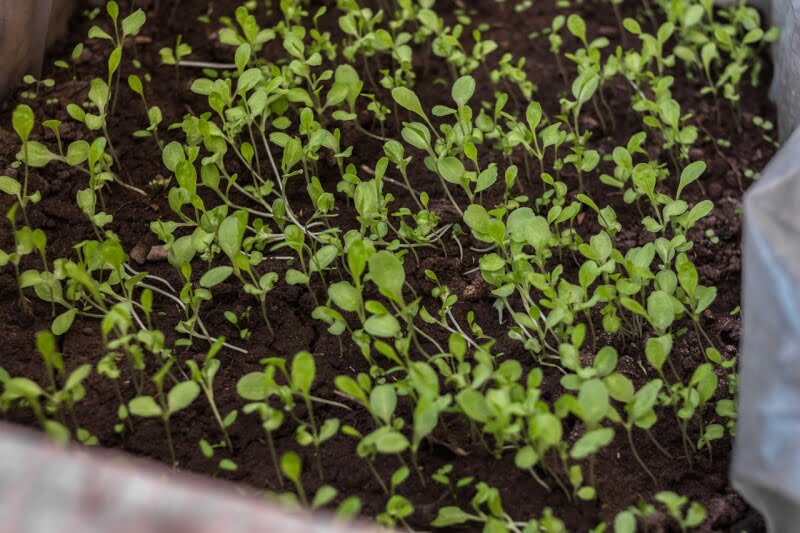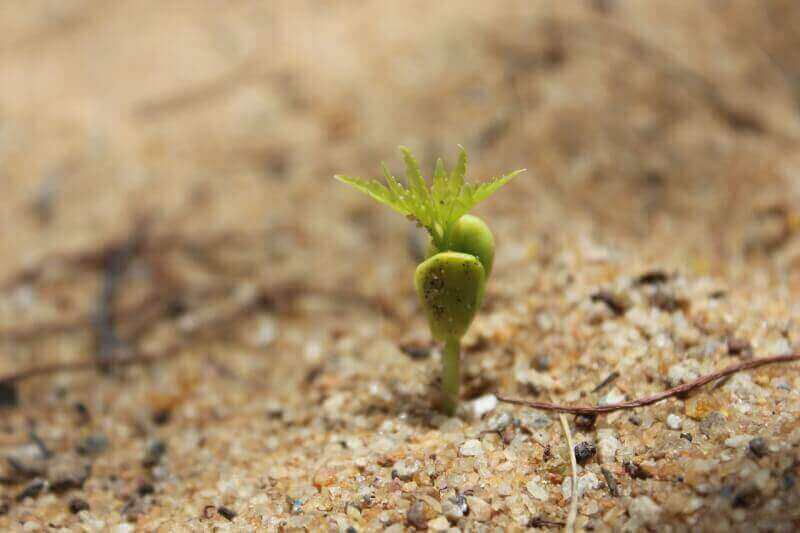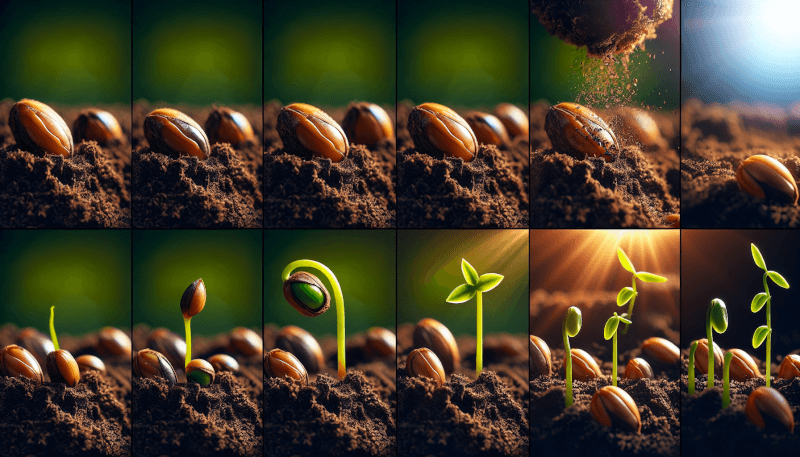👋 Click the mic button to talk to Alfred, the Todd's Seeds Gardening/Sprouting Expert – Feel free to ask him anything!
Ask Virtual Todd Anything - Click the Mic
Interested in learning how to sprout your own seeds? Look no further! This article has got you covered with easy-to-follow sprouting seeds directions. Whether you’re a seasoned gardener or just starting out, sprouting seeds is a fun and rewarding way to grow your own plants. With these step-by-step instructions, you’ll be well on your way to a successful sprouting journey. So grab your seeds and get ready to witness the miracle of life as tiny seeds transform into thriving plants right before your eyes!
If you want to cut to the chase and download our step-by-step general sprouting seeds directions you can get those instructions here: GENERAL SPROUTING INSTRUCTIONS

Choosing the Right Seeds
When it comes to sprouting seeds, there are plenty of options to choose from at Todd’s Seeds. To ensure successful sprouting, it is important to research and select the right type of seeds for your needs. Some popular sprouting seeds include alfalfa, broccoli, radish, and mung beans. Each type of seed has its own unique taste and nutritional profile, so it’s important to consider your preferences and dietary requirements. Additionally, you may want to explore organic and non-GMO options for a healthier sprouting experience.
Research Different Types of Sprouting Seeds
Before purchasing your sprouting seeds, take some time to research and understand the different types available. Look for information on taste, texture, and nutritional content to ensure that the seeds you choose align with your preferences and health goals. Online gardening forums, seed catalogs, and reputable websites are great resources for learning about different sprouting seeds and sprouting seeds directions. Don’t be afraid to ask for recommendations from experienced sprouters or your local gardening community.
Sprouting Seeds Directions – Consider the Climate and Growing Conditions
The climate and growing conditions in your region can greatly affect the success of your sprouting endeavors. Some seeds thrive in warm and humid conditions, while others prefer cooler and drier environments. It is important to take these factors into consideration when choosing your sprouting seeds. If you live in a cold climate, you may want to opt for cold-resistant seeds or use a heating pad to maintain optimal temperature during the sprouting process. On the other hand, if you live in a hot and dry climate, you may need to adjust your watering schedule to prevent the sprouts from drying out.
Check for Quality and Freshness
When purchasing sprouting seeds, it is essential to ensure that they are of high quality and freshness. Fresh seeds are more likely to germinate quickly and produce healthy sprouts. Look for seeds that are plump, undamaged, and have not exceeded their expiration date. Avoid buying seeds in bulk unless you are confident in the source and quality. It is always better to purchase smaller quantities of seeds from reputable sellers to maintain freshness. Remember, the quality of your seeds will directly impact the success of your sprouting journey.
Preparing the Sprouting Container
To kickstart your sprouting journey, it is important to have the right sprouting container. A good sprouting container will provide drainage, ensure proper air circulation, and be easy to clean. Here are sprouting seeds directions to prepare your sprouting container.
Select an Appropriate Container
When it comes to sprouting containers, there are numerous options available. You can choose between jar sprouters, tray sprouters, or even use special sprouting bags. The choice of container depends on personal preference, the type of seeds you are sprouting, and the level of convenience you desire. Jar sprouters are popular for their simplicity and ease of use, while tray sprouters and bags offer larger sprouting capacity. Consider the size and number of sprouts you plan to grow to determine the right container for you.
Clean and Sterilize the Container
Before using your sprouting container, it is essential to clean and sterilize it to prevent the growth of harmful bacteria. Wash the container thoroughly using warm water and mild dish soap, paying close attention to any crevices or corners where dirt or residue might accumulate. Rinse the container well to remove any soap residue. To sterilize the container, you can soak it in a solution of one part vinegar to ten parts water for a few minutes. Rinse the container thoroughly after sterilization to remove any vinegar smell.
Ensure Proper Drainage
Proper drainage is crucial for successful sprouting. Without adequate drainage, excess water can accumulate and cause the sprouts to become waterlogged, leading to rot and mold. To ensure proper drainage, consider using a sprouting lid or a mesh screen to cover your sprouting container. These accessories allow water to flow out while preventing the seeds from escaping. Alternatively, you can create your own drainage system by poking small holes in the lid or bottom of the container. Just make sure the holes are not too large to prevent the seeds from falling out.
Soaking the Seeds
Soaking the seeds is a crucial step in the sprouting process. It helps kickstart the germination process and prepares the seeds for sprouting. Here’s how to soak your seeds properly.
Measure the Desired Amount of Seeds
Depending on the size of your sprouting container and how many sprouts you want, measure the desired amount of seeds. It is important not to overcrowd the container, as this can hinder proper air circulation and may lead to mold or rot. Follow the instructions on the seed packaging or consult reliable sources to determine the optimal amount of seeds for your sprouting container.
Rinse the Seeds Thoroughly
Before soaking the seeds, it is essential to rinse them thoroughly to remove any dirt, debris, or chemical residues. Place the seeds in a fine-mesh sieve or colander and run them under cold water. Gently swish the seeds around to ensure all surfaces are cleaned. Inspect the seeds while rinsing to remove any broken or discolored ones. Rinsing the seeds not only cleans them but also helps promote a more even and successful sprouting process.
Soak the Seeds
Once the seeds are rinsed, it’s time to soak them. Fill your sprouting container with enough clean water to cover the seeds completely. Ensure that the water is at least two to three times the volume of the seeds, as they will absorb water and expand during soaking. Let the seeds soak for the recommended time specified on the seed packaging or as instructed by reliable sources. The soaking time can vary depending on the type of seed, but most seeds require an overnight soak of approximately 8-12 hours.
Sprouting Seeds Directions – Draining and Rinsing
After the seeds have soaked, it’s important to drain and rinse them regularly to maintain optimal moisture levels and prevent the growth of harmful bacteria. This step is crucial in ensuring the health and quality of your sprouts.
Drain the Soaked Seeds
Carefully drain the water from the sprouting container, allowing it to flow out through the drainage system you have in place. Gently shake the container to promote better drainage and prevent excess water from lingering. It’s important not to let the seeds sit in standing water, as this can lead to rot. A well-drained container sets the foundation for successful sprouting.
Rinse the Seeds Regularly
After draining, it’s time to rinse the seeds. Fill the sprouting container with clean water and gently agitate the seeds to remove any residual dirt or debris. Pour out the rinsing water through the drainage system and repeat the rinsing process at least twice a day, or as recommended for the specific type of seed you are sprouting. Rinse the seeds thoroughly to ensure that they remain clean and hydrated throughout the sprouting process.
Ensure Proper Air Circulation
Proper air circulation is essential for the healthy growth of sprouts. After rinsing, make sure to spread out the seeds evenly in the sprouting container, providing enough space for air to circulate freely. Avoid overcrowding, as this can lead to excess moisture and may promote the growth of mold or bacteria. Occasionally gently shake or rotate the container to prevent the seeds from clumping together and to promote even growth.

Maintaining the Right Environment
Creating and maintaining the right environment is crucial for the healthy development of sprouts. Here are some key factors to consider in creating a favorable sprouting environment.
Provide Adequate Light
Although sprouts do not require direct sunlight to sprout, they still need some light exposure. Place your sprouting container in a well-lit area, preferably near a window or under a grow light. Avoid exposing the sprouts to direct sunlight, as this can dry them out or cause overheating. Aim for indirect or filtered light, ensuring that the sprouts receive approximately 6-8 hours of light each day. As the sprouts grow, you can gradually increase their exposure to light to promote greening.
Maintain Optimal Temperature
Temperature plays a significant role in the sprouting process, as it affects the germination and growth of the seeds. Most sprouting seeds thrive in temperatures between 65-75°F (18-24°C). However, different types of seeds may have specific temperature preferences, so it’s important to research the optimal temperature range for your chosen seeds. If your ambient room temperature is not within the desired range, consider using a heating pad or placing the sprouts in a warmer area of your home to maintain optimal conditions.
Control Humidity Levels
Humidity is another important factor to consider when sprouting seeds. While sprouts require moisture for growth, excessive humidity can lead to the development of mold and rot. Aim for a humidity level of around 50-70% for most sprouting seeds. You can measure humidity using a hygrometer, which can be purchased online or at garden supply stores. If your humidity levels are too high, consider adjusting your rinsing frequency or using a fan to promote air circulation and reduce moisture buildup.
Monitoring and Troubleshooting
As with any gardening endeavor, monitoring the progress of your sprouts is crucial. Regular observation allows you to detect any potential issues early on and take appropriate measures to address them.
Check for Mold or Foul Odor
Regularly inspect the sprouting container for any signs of mold growth or foul odor. Mold can develop when there is excess moisture and poor air circulation, leading to the development of toxins that are harmful to consume. If you notice any mold or a foul smell, it’s important to discard the affected sprouts and thoroughly clean the sprouting container to prevent the spread of mold spores. Adjust your rinsing frequency and air circulation to prevent mold growth in the future.
Monitor for Excessive or Insufficient Moisture
Proper moisture levels are vital for the healthy development of sprouts. Keep a close eye on the moisture content of the sprouting container. If the sprouts appear dry or are yellowing, it may indicate insufficient moisture. In such cases, adjust your rinsing schedule or mist the sprouts lightly to increase the humidity. Conversely, if the sprouts are excessively wet or have a slimy texture, it may indicate excessive moisture. Decrease the frequency of rinsing or adjust your drainage system to improve moisture management.
Addressing Pest Infestations
While less common than with outdoor gardening, indoor sprouting can sometimes attract pests such as fruit flies or fungus gnats. These pests can lay their eggs on the moist sprouting medium, leading to an infestation. To prevent pest issues, ensure proper air circulation and practice good hygiene by regularly cleaning your sprouting container. If you encounter a pest infestation, you can try placing sticky traps near the sprouting container or using natural pest control methods like neem oil or vinegar traps to eliminate the pests.

Harvesting and Storing
Once your sprouts have reached the desired level of growth, it’s time to harvest them and enjoy the fruits of your labor. Follow these steps to ensure a successful harvest and proper storage of your sprouts.
Harvest the Sprouts at the Right Time
The ideal time to harvest your sprouts depends on personal preference and the type of sprout you are growing. Typically, sprouts are ready to harvest when they have fully developed their first set of true leaves. The length of time for sprouting varies depending on the seed, ranging from a few days to a week or more. Taste a few sprouts along the way to determine when they reach the desired texture and flavor. Harvesting too early may result in underdeveloped sprouts, while waiting too long can lead to overgrown and woody sprouts.
Rinse and Drain the Sprouts
After harvesting the sprouts, it’s important to rinse them thoroughly to remove any residual hulls or seed coats. Fill a clean bowl or sink with water and gently swish the sprouts around. Allow any loose hulls or debris to float to the top and then skim them off. Drain the sprouts well to remove excess water, ensuring that they are not left sitting in standing water. Proper drainage helps prevent spoilage and prolongs the freshness of your sprouts.
Store the Sprouts Properly
To maintain the freshness and crispness of your sprouts, it’s essential to store them properly. After rinsing and draining, transfer the sprouts to a clean storage container or airtight plastic bag. Line the container with a paper towel or breathable cloth to absorb any excess moisture and extend the shelf life of the sprouts. Store the container in the refrigerator, which will help slow down the sprouting process and maintain the quality of the sprouts. Consume the sprouts within a few days to enjoy them at their peak freshness.
Cleaning up and Repeating the Process
After each batch of sprouts, it’s important to clean and disinfect your sprouting container to prevent the growth of harmful bacteria and ensure the success of your next sprouting venture.
Clean and Disinfect the Sprouting Container
Empty the sprouting container and remove any remaining sprout residue or hulls. Wash the container thoroughly with warm water and mild dish soap, paying special attention to any hard-to-reach areas. Rinse the container well to remove any soap residue. To disinfect the container, you can use a dilute bleach solution or a food-grade hydrogen peroxide solution. Consult the manufacturer’s instructions or reliable sources for the appropriate concentration and duration of disinfection. Rinse the container thoroughly after disinfection to eliminate any disinfectant residues.
Start a New Batch of Sprouts
With your sprouting container cleaned and ready, it’s time to start a new batch of sprouts. Repeat the steps outlined in the earlier sections to select the right seeds, prepare the container, soak the seeds, and go through the sprouting process. Each new batch presents an opportunity to refine your techniques and experiment with different seed varieties to expand your sprouting repertoire.
Repeat the Process
Sprouting is a continuous process that can be enjoyed year-round. As you gain experience and confidence in sprouting, feel free to experiment with different seed varieties, growing techniques, and flavor combinations. Embrace the joy of sprouting as a sustainable and delicious way to add fresh and nutritious ingredients to your meals.

Exploring Alternative Sprouting Methods
While traditional jar or tray sprouting is commonly practiced, there are various alternative methods you can explore to suit your preferences and needs. It is not unusual to have several sprouting seeds directions.
Using Sprouting Bags or Trays
Sprouting bags or trays offer a convenient and space-efficient way to grow sprouts. These specialized containers are designed with excellent drainage and airflow, ensuring optimal growing conditions. Sprouting bags are particularly popular for their portability and ability to grow multiple types of sprouts simultaneously. Give sprouting bags or trays a try to see if they align with your sprouting goals.
Trying Vertical or Tray Sprouting
Vertical or tray sprouting is a technique that maximizes space utilization. With this method, seeds are spread out on multiple layers or stacked trays, allowing for efficient sprouting of large quantities in a compact space. Vertical or tray sprouting is especially beneficial if you have limited counter space or want to maximize your sprout yield. Explore this method to increase your sprouting capacity and productivity.
Experimenting with Different Sprouting Techniques and Sprouting Seeds Directions
Sprouting is a versatile and creative process that lends itself well to experimentation. Feel free to explore different sprouting techniques and sprouting seeds directions, such as using sprouting jars with mesh lids, sprouting without soil using hydroponic methods, or using specialized sprouting equipment like automatic sprouters or microgreen growing systems. By trying different sprouting techniques, you can discover what works best for you and enjoy a variety of sprout flavors, textures, and nutritional benefits.
Discovering Delicious Sprouting Recipes
Once you have mastered the art of sprouting, it’s time to incorporate your homegrown sprouts into delicious recipes. Sprouts add a refreshing crunch, vibrant color, and unique flavor to a wide range of dishes. Here are a few ideas to get you started.
Adding Sprouts to Salads and Sandwiches
Sprouts bring a fresh and crisp element to salads and sandwiches. Toss a handful of your favorite sprouts into a green salad or mix them with other vegetables for a nutritious side dish. Add sprouts to your favorite sandwich or wrap for an extra layer of texture and flavor. The mild and slightly nutty taste of sprouts pairs well with a variety of ingredients, enhancing the overall taste and nutritional value of your meals.
Using Sprouts in Stir-fries and Soups
Stir-fries and soups are perfect for incorporating sprouts. Add sprouts toward the end of the cooking process to retain their crunch and delicate flavors. Sprouts like mung bean sprouts or bean sprouts work well in Asian-inspired stir-fries or noodle dishes. You can also toss them into soups or stews to add a refreshing element to hearty and comforting meals.
Creating Sprout-based Dips and Spreads
Harness the creamy and nutrient-rich qualities of sprouts by creating homemade dips and spreads. Blend sprouts such as alfalfa or broccoli sprouts with Greek yogurt, lemon juice, and herbs to create a flavorful dip for fresh vegetables or pita chips. Alternatively, use sprouts as a topping for avocado toast or mix them with cream cheese for a nutritious spread. The versatility of sprouts allows you to get creative and experiment with different flavor combinations.
Sprouting seeds is a rewarding and fulfilling process that allows you to cultivate your own fresh and nutritious ingredients. By following the sprouting seeds directions outlined in this comprehensive guide, you can embark on a successful sprouting journey and enjoy the benefits of bountiful, flavorful sprouts in your daily meals. Happy sprouting!
